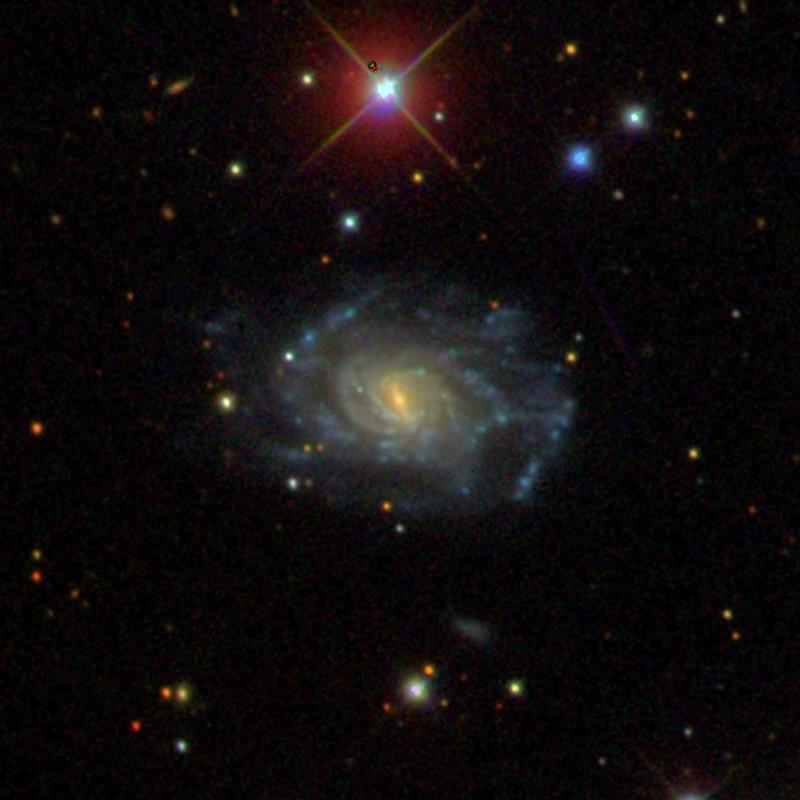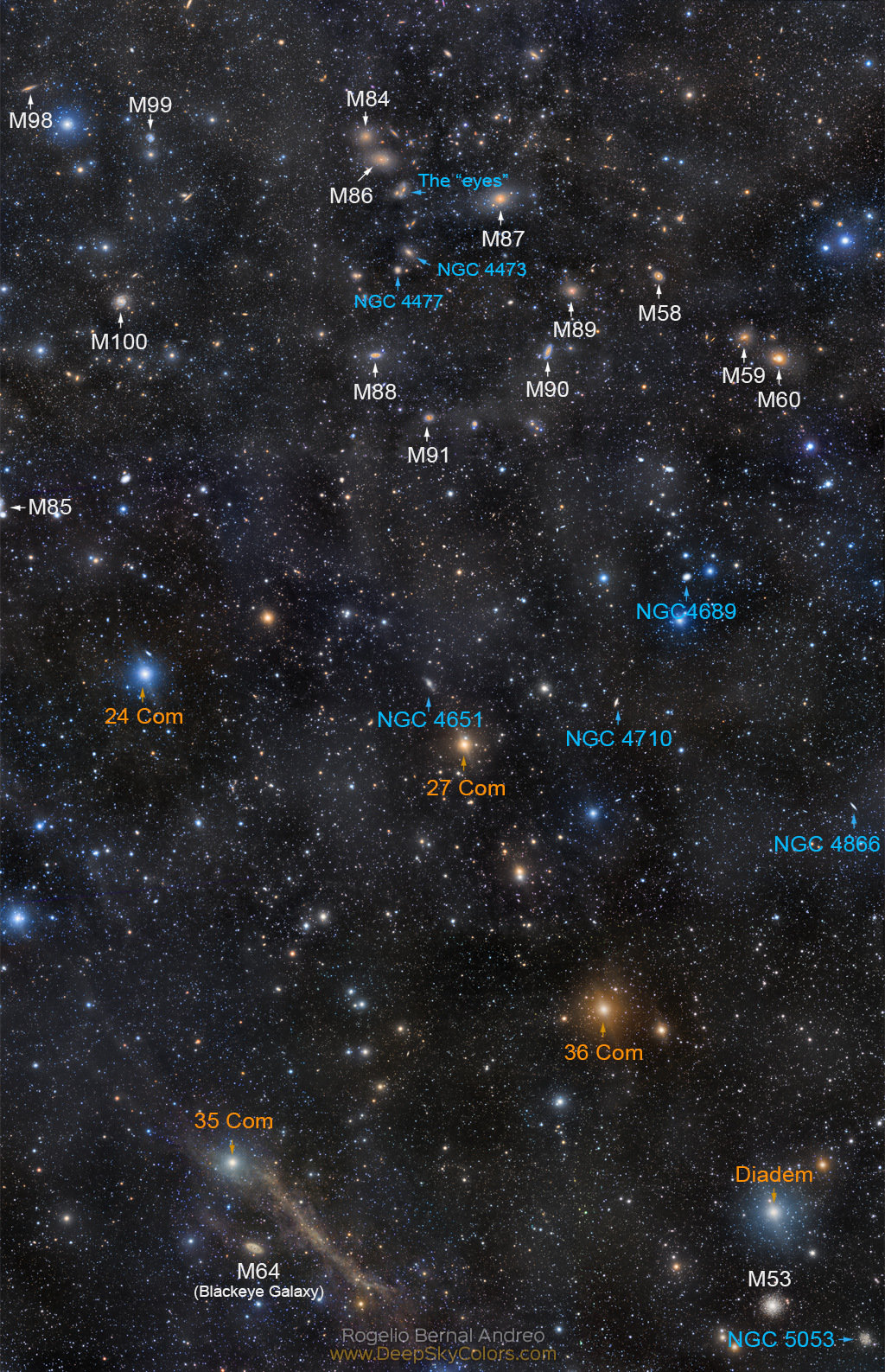Markarian's Chain. Photo: Ginge Anvik.
I have annotated a few of the galaxies.
Galaxy number 1 is NGC 4402. This hapless galaxy is falling headlong through the Virgo Cluster, which is full of hot thin gas. It is like plunging through a terrible upwind, and all your loose possessions may fly away from you in the wind.
As for NGC 4402, the upwind causes much of its gas and dust to be swept away from it in the opposite direction to its plunge through the Virgo Cluster. The phenomenon is called ram pressure. Poor NGC 4402 is going to lose much or all of its starforming material and end up as a "red and dead" disk galaxy, also called a lenticular galaxy.
Galaxy number 2 is giant elliptical galaxy M86. This galaxy is very elongated.
Galaxies number 3 are the "Eyes", NGC 4435 and NGC 4438. NGC 4438 is surrounded by some twisted shreds of spiral arms, which are still bluish. The spiral arms have have been heavily distorted and robbed of much of their gas through the interactions of NGC 4438 with its (too) close companion, smallish elliptical galaxy NGC 4435.
A fascinating aspect of this trio of galaxies - M86, plus NGC 4438 and NGC 4435 - is that there just possibly may be some interaction between them. A very deep image by Mark Hanson shows a reddish bridge between the massive elliptical galaxy and the "Eyes" (and a reddish halo around M86, which is probably a processing effect). The bridge could be a physical feature linking the galaxies, but it could also be some foreground "cirrus clouds" in the Milky Way.
Galaxy number 4 is NGC 4477 (with its small companion NGC 4479). In the APOD, NGC 4477 looks like a quite interesting ring galaxy, doesn't it? But up close it is quite bland, even though you can see hints of the ring feature that is so striking in the APOD. NGC 4477 certainly used to be a (tightly wound) spiral galaxy, and there are hints, but only hints, of spiral arms in it still.
Note that both NGC 4477 and its small companion galaxy are barred galaxies, which is to say that they have an elongated straight feature running through their centers. The bars are bright and prominent in them. But the bar of NGC 4477 is short, while the bar in NGC 4479 is long.
Both NGC 4477 and NGC 4479 are "red and dead". They are uniformly yellow and totally devoid of dark dust lanes, emission nebulas and bright clusters of stars. This is a common fate of galaxies in large clusters, because the cluster environment depresses star formation. Gravitational jostling robs galaxies of much of their gas, and enormous jets from the dominant galaxy's black hole - in the case of the Virgo Cluster,
the jet from M87 - heat up the gas in the central parts of the cluster in such a way that it becomes hard or impossible for the gas in nearby galaxies to cool down enough to gather in clumps which can then contract and turn into new stars.
Ann
 Markarian's Chain
Markarian's Chain















